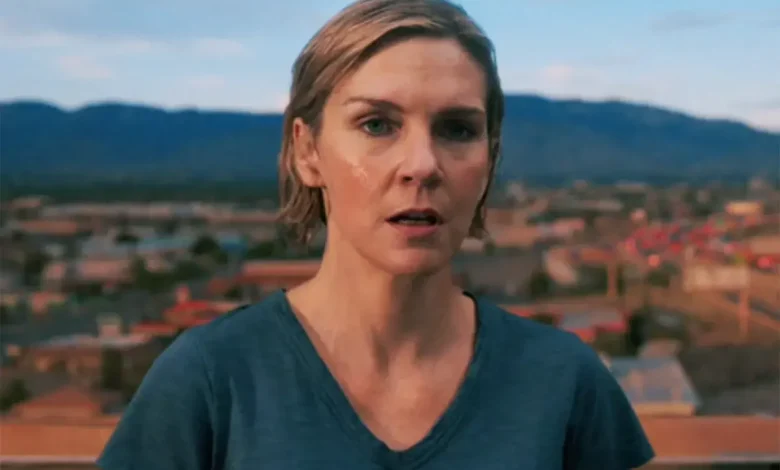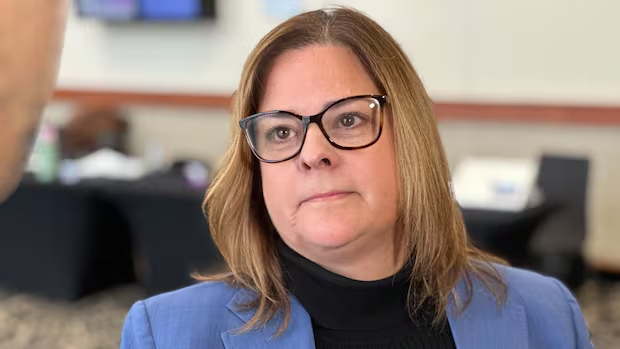‘Pluribus’ Episode 5 Recap: The Dairy Company

I love how much of Pluribus takes place in silence. I love how much strength it derives from simply putting a complicated person on the screen, wordlessly, and allowing us to observe them. I love how much the show moves to the rhythms of labor, the painstaking, time-consuming, and necessary efforts we put into living that most shows ignore. There’s even a time-lapse shot of Carol Sturka sleeping as the light coming through the window shifts with the lengthening of the day. In short, Pluribus takes great pains to convey what it is like to simply exist in the world it has constructed — to be a human, a thinking person in a human body, surrounded by a world grown hostile and strange.
The plot of this episode is simple, almost minimal. In the aftermath of Zosia’s cardiac arrest, the collective decide Carol is a walking hostile work environment, and abandon her and the entire city of Albuquerque en masse. They won’t talk to her on the phone except via recordings. They won’t pick up her garbage or her mail except with drones. “We just need a little space,” the recording explains.
This is mostly fine with Carol, whose time alone is productive, albeit accidentally. When coyote infiltration and insufficiently powerful drones screw up her trash pickup, she puts her garbage in a pair of public trash and recycling cans instead. In doing so, she realizes that every recycling bin in town is full of the same cartons of milk, traceable to the same dairy, which produces the same amber liquid from the same white powdery mystery substance.
Perhaps this is the key to reversing the joining process, which she knows is possible without knowing the means by which to do it. Carol attempts to transmit all these findings to her 12 fellow survivors, though she has to count on the good graces of the unseen Others to trust that the info finds its way to its intended recipients.
But in addition to accidentally reenacting the plot of The Chair Company, which also features a weird loner forced to become a detective to uncover the truth behind a sinister product, Carol has to deal with matters closer to home. Even after the trash situation is rectified, the coyotes return, this time in a bigger group and with a bigger meal in mind. The varmints start digging up the grave of Carol’s wife Helen, until she gets in her cop car, cranks up the lights and sirens, and comes barreling in through the back fence to scare the critters away.
Carol then spends much of the next day gathering paving stones and drag-assing them across town to cover the spot where Helen was laid to rest. She even paints a pretty gravestone, a humble side of her artistic talents that’s been hinted at if you pay close attention to her home but which we haven’t seen in action until now. To paraphrase Elaine Benes, perhaps there’s more to Carol Sturka than meets the eye.
In a cliffhanger ending, Carol discovers what’s under the rows and rows of plastic tarps in the cold storage facility at the plant that bags the mysterious white substance and covers her mouth in horror. Cut to black! Very dramatic, but I do worry how it will deliver. The obvious solution to the riddle is that the Others are consuming the remains of the billion or so people who’ve died since their takeover. Soylent Green is people, in other words.
However, such a twist is so obvious that I would expect a swerve — maybe she’s just shocked because it’s piles of valuable Pokémon cards. Yet the problem with a swerve is that the obvious answer, they’re cannibals, is also the grossest and therefore coolest answer. What to do, what to do!
In all honesty, after an episode this strong I don’t really need them to do much. I’d still like some clarity on whether the collective keeps allowing Carol to short-circuit their brains worldwide without warning her it’s about to happen or asking her to stop what she’s doing. Is it really fair of them freeze her out when it’s not her fault they’re wired that way but neglected to tell her? Are they stupid, or is the show just expecting us not to care? But working from a script by Ariel Levine, director Gordon Smith constructs a series of memorable visuals that overcome many of my misgivings about the plot.
A panoramic view of the Others abandoning Albuquerque, the yellow-on-blue-on-blue composition of a shot of Carol dumpster-diving, the blue-and-red police lights swirling around her as she sits dazed in the driver’s seat, her black silhouette standing against the orange sunset with a halo of gnats like something out of The Texas Chain Saw Massacre — this episode, my favorite so far, is powered by moments where the images do the talking. The rest is silence.
Sean T. Collins (@seantcollins.com on Bluesky and theseantcollins on Patreon) has written about television for The New York Times, Vulture, Rolling Stone, and elsewhere. He is the author of Pain Don’t Hurt: Meditations on Road House. He lives with his family on Long Island.





